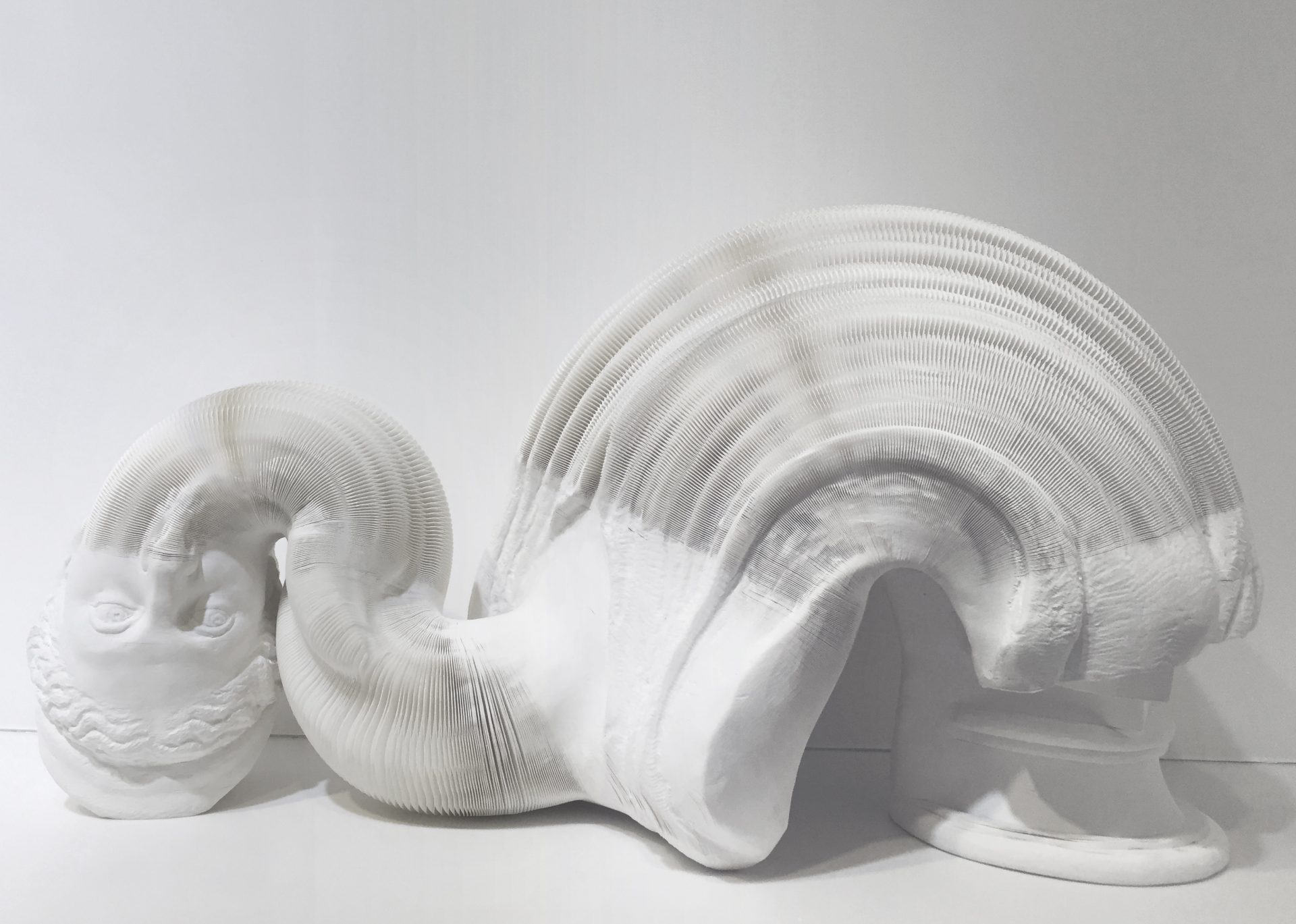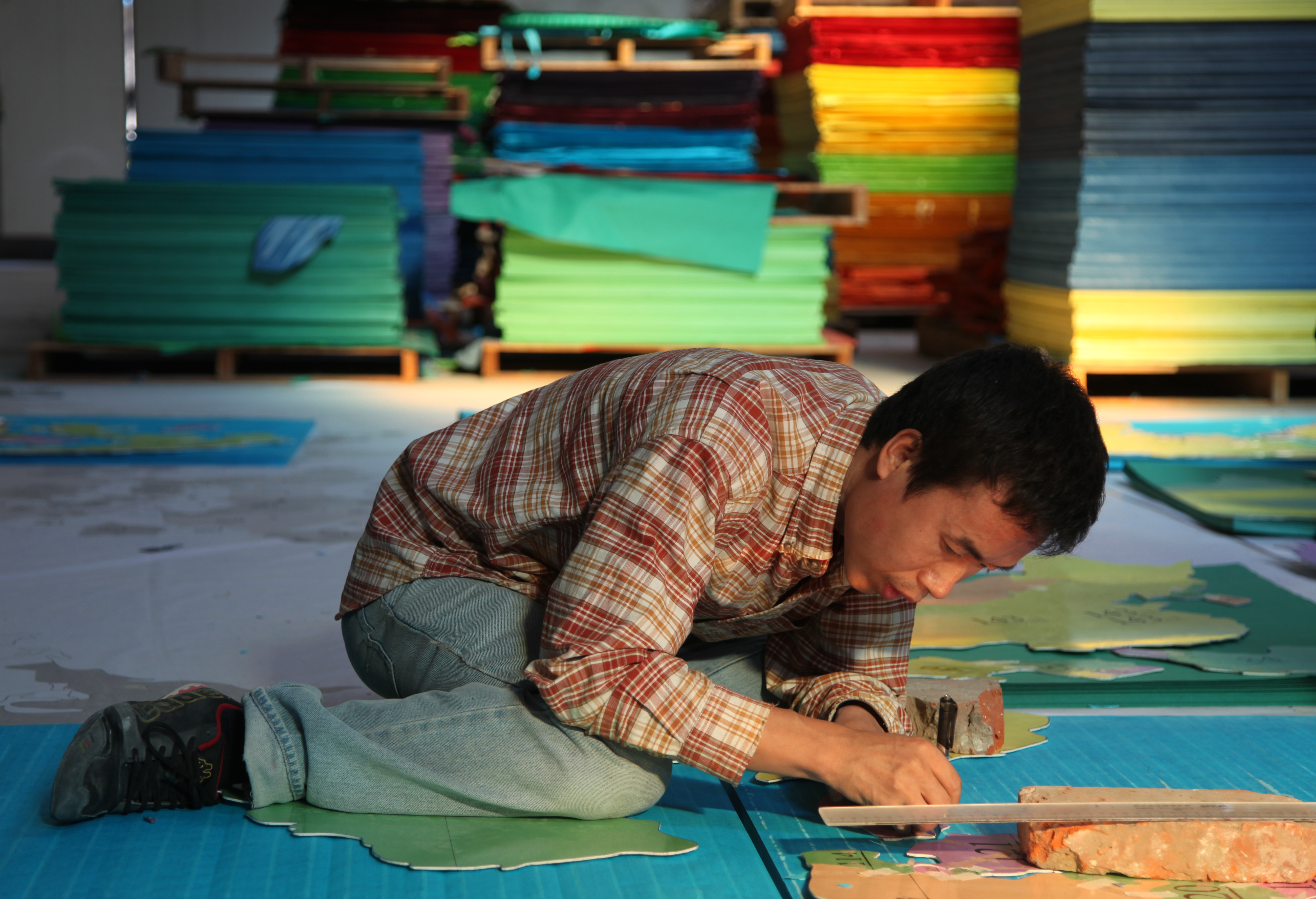
Li Hongbo’s artistic creation is grounded in his own starting point. Seeking inspiration from the traditions of his own Chinese culture, he looks into his origin for creative possibilities, and merges ideas with his rich knowledge in contemporary concepts to present pieces of art which are unique in aesthetics, purity, and fascination. With the use of simple material and craft, he instills a strong connection to reality into his artworks, while at the same time enriching the spiritual value of the mediums used.
Li’s concepts are distinctly contemporary. Exploring the malleability of materials, his sculptures command viewers to think out of the box, while at the same time echo the absurdities of the world and the confusion of its inhabitants. From the traditional Chinese folk craft of ‘paper gourd’ to the food chopping knives widely used in China, he manipulates materials with a long history and infinite cultural attributes into different shapes, sizes, and directions. His expendable paper sculptures and carved knife sculptures are living, performing tales by the artist’s hand. From a tree made out of paper to a bird held at gunpoint, Li’s artworks serve as cultural narratives that illuminate the artist’s perception of reality.

Li Hongbo (b.1974) immediately became one of the most popular contemporary Chinese artists after graduating from the Central Academy of Fine Arts with an MFA degree in Experimental Art in 2010. He is the founder and head of the newly established Chinese Paper Art Research Institute, Jilin Normal University. Exploring the malleability of materials, his expandable paper and carved knife sculptures encourage viewers to think out of the box. Li has held important solo exhibitions including “When Sculpture becomes Creature” (Angoulême Museum, France, 2017) and “Irons for Ages, Flowers for Days” (SCAD Museum of Art, USA, 2015). His works were included in the UBS Collection, Central Academy of Fine Arts Museum, Wuhan Art Museum, Hubei Art Museum, Shandong Art Museum in China, Asian Civilizations Museum in Singapore and White Rabbit Collection in Australia. He was the winner of the Grand Prize of the 2017 Sovereign Asian Art Prize.
27.03.2019
27.03.2018
20.03.2017
23.03.2016
14.03.2015
16.01.2014
29.08.2015
01.11.2014